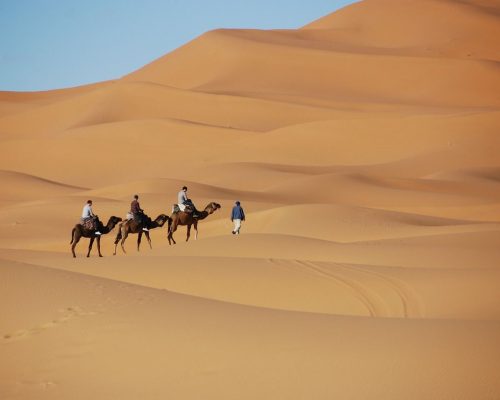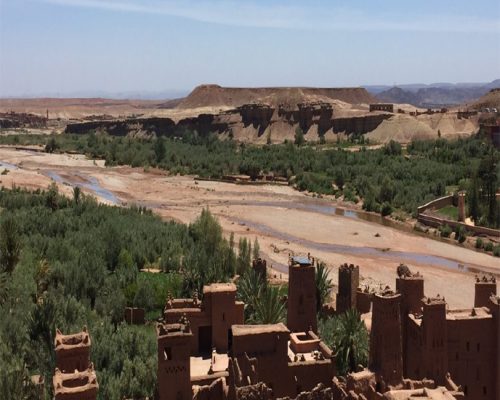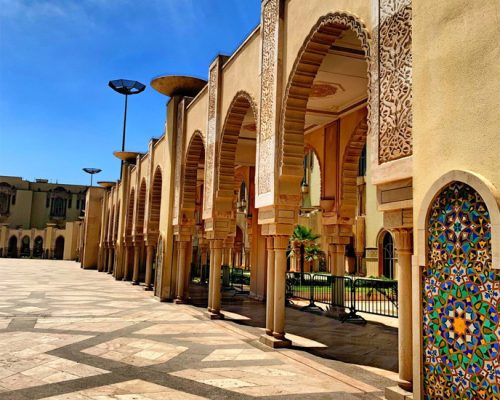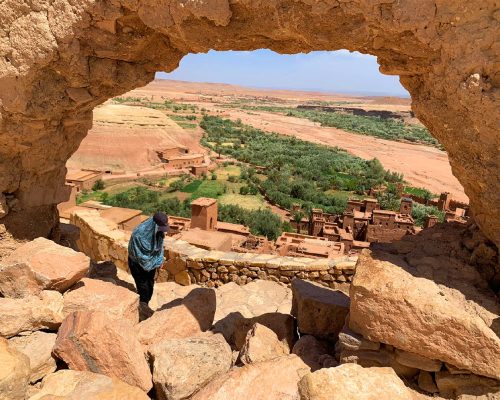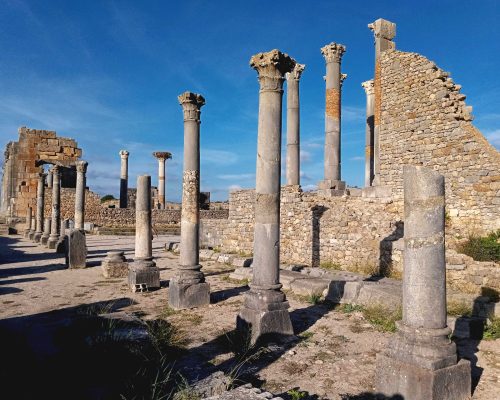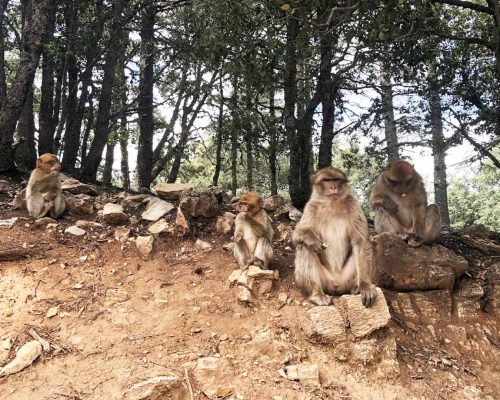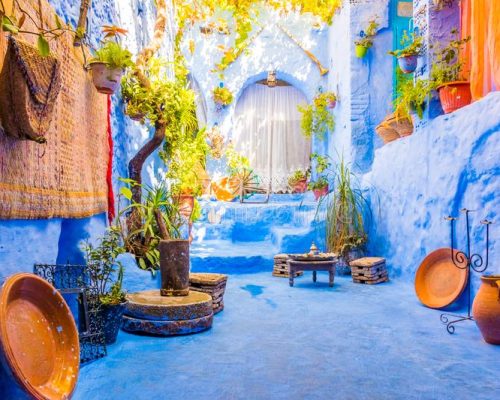
Ksour And Kasbah
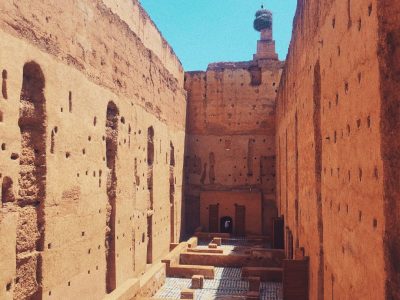
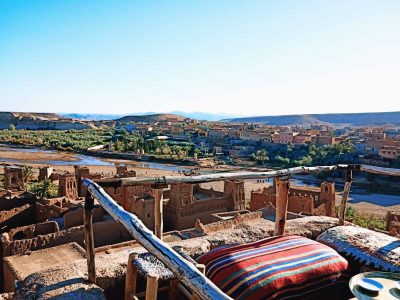
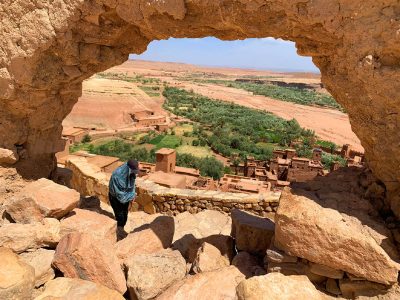
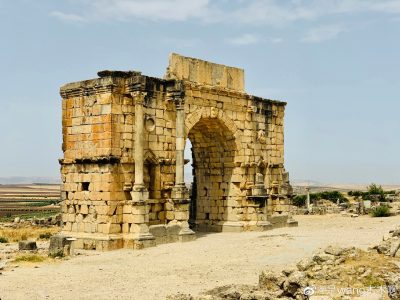
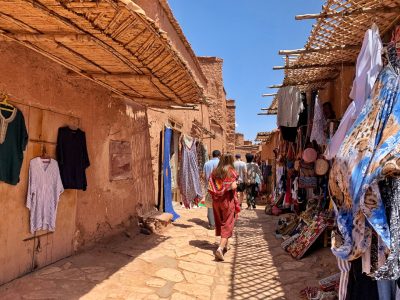
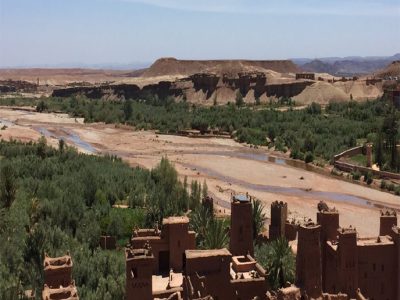
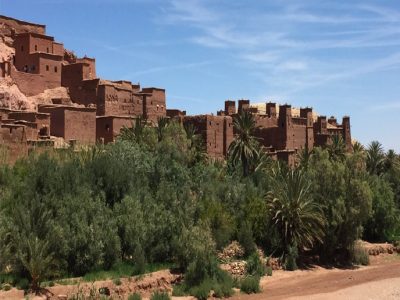
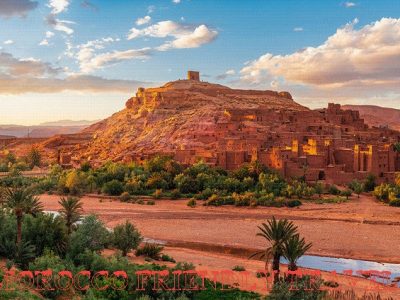
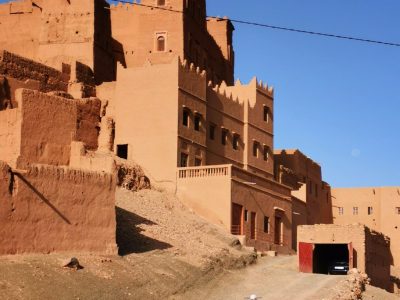
Ksour And Kasbah are Arguably the defining imager of the south , ksour and kasbahs are found throughout the region, peeking out of Palmeries and edging the roads that cut throught the great river valleys, most notably the dades the so-called route of a thousand kasbahs, and the Draa.
A Ksar or ighrem in berber is essentially a fortified tribal village, while a Kasbah or tighremt is fortified home made for the ruling family. The are massive structure, built in the absence of other avaible materials out of the mud clay of the riverbanks. A unique and probably indigenous development of the berber populations, they are often monumental in design and fabulously decorated, with bold geometric patterns incised into exterior walls and slanted towers. Seasonal rains wash off some of the mud, so the buildings require constant upkeep , once a Kasbah has been left unmaintained, it declines very fast, with twenty years enough tp produce a ruinous state if the walls are not renewed.
Agadir, also variants of the ksar structure, used to serve as a combination of tribal fortress and communal granary or storehouse for the villages.
The Draa Kasabahs
Few of the ksour and Kasbahs that shadow the Draa can be more than a hundred years old, though you frequently see the ruins and walls of earlier Ksour abandoned just a short distance from their more modern counerparts. Most are populated by berbers, but there are also arab cilages here, and even a few scattered communities of Jews, still living in their Mellahs. All of the southrrn valleys here, too, have groups of Haratin, Descendants of west African slaves brought into Morocco along the caravan routes. Inevitably, these populations have mixed to some extent and the Jews here are almost certainly converted Berbers, though it is interesting to see just how distinct many of the Ksour still appear, both in their architecture and costums. Thre is for exemple a great difference from one village in the Draa to the next as regards women’s costumes, above all in the wearing and extent of veils.
The Dades Kasbahs
Though several Ksour And Kasbah of the Skoura Kasbahs date, at least in part, from the seventeenth and eighteenth cenyuries, the majority of Kasbahs in the Dades oases are relatively modern. Most of the older fortifications were destroyed in a vicious tribal war 1893, and many that survived were pulled down in the French pacification of the 1920s and 30s. The Kasbah walls in the Dades , Higher and flatter than in the Draa, often seem unscalable, but in the course of a siege or war there were always other methods of conquest, a favourite means of attack in the 1980s, according to the writer Walter Harris, Who journeyed here in disguise, was to divert the water channels of the oasis round a Kasbah and simply wait for it’s foundations to dissolve.
The Glaoui
The extent and speed of Madani and Thami El Glaoui, rise to power is remarkable. In the mid-ninteenth century, their family were simply local clan leaders, controlling an important Atlas pass between Marrakech and the south but lacking influence beyond it. Their entrance into national politics began dramatically in 1893 in that year’s terrible winter Sultan Moulay Hassan, on returning from a disastrous Haraka of the tafilalt found himself at the mercy of the brothers for food, shelter and safe passage. With shrewed political judgement, they rode out to meet the Sultan, felting him with every detail of protocol and, miraculously, producing enough food to feed the entire three thousand strong force for the duration of their stay.
The extravagance was weel rewarded. By the time Moulay Hassan began his return to Marrakech, he had given caid ship of all, was forced to abandon vast amounts of the royal armoury including the most important of all first canon to be seen in the Atlas in Telouet. By 1901, the brothers had eliminated all opposition in the region, and when the French arrived in Morocco in 1912, the Glaoui were able to dectate the form of government for virtually all the south, putting down the attempted nationalist rebellion of El Hiba, pledging loyality throughout World War 1 and having themselves appointed pashas of Marrakech, with their family becoming caids in all the main Atlas and desert cities.


